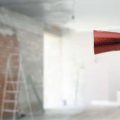1. Understanding Home Inspections in the U.S.
When you’re buying a home in the United States, a home inspection is almost always part of the process. But what exactly is a home inspection, who does it, and why is it considered so important?
What Is a Home Inspection?
A home inspection is a detailed examination of a property’s condition. It’s usually ordered by the buyer after their offer has been accepted, but before finalizing the purchase. The main goal is to identify any existing or potential issues with the home—things like problems with the roof, plumbing, electrical systems, heating and cooling, foundation, or even signs of water damage or pests.
Who Performs Home Inspections?
In most cases, a licensed home inspector carries out this job. These professionals are trained to spot both obvious and hidden problems that might not be noticed by someone without experience. In many states, inspectors must be certified and follow specific guidelines set by organizations such as ASHI (American Society of Home Inspectors) or InterNACHI (International Association of Certified Home Inspectors).
Why Are Home Inspections Standard in American Real Estate?
Home inspections have become a standard step because they protect both buyers and sellers. For buyers, an inspection provides peace of mind and a clearer picture of what they’re getting into—it can also give them leverage to negotiate repairs or price reductions if issues are found. For sellers, having an inspection upfront can help avoid surprises that might delay or derail the sale.
Typical Aspects Checked During a Home Inspection
| Area | What’s Checked |
|---|---|
| Roof | Leaks, damaged shingles, overall condition |
| Foundation & Structure | Cracks, settling issues |
| Plumbing | Pipes, leaks, water heater function |
| Electrical Systems | Outlets, wiring, breaker panels |
| Heating & Cooling (HVAC) | System age and operation |
| Pest Damage | Termite or rodent evidence |
| Appliances | Functionality and safety checks |
This thorough review helps everyone involved make more informed decisions during the home buying process.
2. Typical Costs of a Home Inspection
When buying a home in the United States, one of the key steps is getting a home inspection. But how much does it actually cost? The price can vary depending on several factors. Let’s take a closer look at average home inspection fees, what influences these costs, and what you typically get for your money.
Average Home Inspection Fees Across the U.S.
On average, a standard home inspection in the U.S. usually costs between $300 and $500. However, the exact amount can change based on where you live, the size of the property, and other variables.
| Region | Average Cost (USD) |
|---|---|
| Northeast (e.g., New York, Boston) | $400–$600 |
| Midwest (e.g., Chicago, Detroit) | $300–$450 |
| South (e.g., Atlanta, Dallas) | $350–$500 |
| West (e.g., Los Angeles, Seattle) | $350–$550 |
What Factors Affect Home Inspection Pricing?
- Location: Inspections tend to be pricier in large cities or high-cost living areas.
- Home Size: Larger homes or properties with multiple units usually require more time and cost more to inspect.
- Age of Home: Older homes may have more issues or require extra attention, increasing the price.
- Additional Services: Specialized inspections like radon testing, mold screening, or termite checks are often extra.
- Inspector Experience: Highly experienced or certified inspectors might charge higher fees.
What’s Generally Included in the Cost?
A typical home inspection covers most major systems and components of the house. Here’s what you can usually expect to be included:
- Roof and attic condition
- Foundation and structural elements
- Plumbing systems
- Electrical systems
- Heating and cooling systems (HVAC)
- Windows and doors
- Kitchens and bathrooms
- Basements and crawl spaces
Add-On Inspections (Usually Extra Cost)
- Pest/termite inspections
- Mold/radon/asbestos testing
- Sewer line or septic system checks
- Swimming pool/spa inspections
The exact services included can vary by inspector, so it’s always a good idea to ask for a detailed list before scheduling your inspection.
![]()
3. What Home Inspectors Look For
When you schedule a home inspection, you’re not just getting someone to walk through the property with a checklist. Professional inspectors follow a detailed process to make sure you know exactly what shape the home is in before you buy or sell. Here’s an overview of the main areas and issues most inspectors focus on during their evaluation:
Key Areas Inspected
| Area | What Inspectors Check |
|---|---|
| Structural Integrity | Inspectors look for cracks in walls and foundations, uneven floors, or signs of settling that could affect the safety and stability of the home. |
| Electrical Systems | This includes checking outlets, wiring, breaker panels, and ensuring everything is up to code and safe from potential hazards like fire risks. |
| Plumbing | They check water pressure, look for leaks under sinks or in basements, inspect water heaters, and test fixtures to spot any major plumbing concerns. |
| Roofing | The inspector examines shingles, flashing, gutters, and signs of leaks or water damage that could lead to costly repairs down the road. |
| HVAC (Heating, Ventilation & Air Conditioning) | The system’s age, condition, and performance are reviewed to ensure it heats and cools efficiently without any red flags. |
Other Common Issues Found During Inspections
- Pest Infestation: Signs of termites, rodents, or other pests can be a big concern for buyers.
- Mold & Water Damage: Inspectors watch for stains on ceilings or walls that could signal hidden mold or past water issues.
- Insulation & Ventilation: Proper insulation and airflow are checked to help prevent energy loss and moisture buildup.
- Safety Concerns: This includes checking smoke detectors, stair railings, and other features that keep residents safe.
Why These Areas Matter
Catching problems early—before you close on a home—can save you thousands of dollars in repairs and give you peace of mind. It also helps with negotiations if issues are found. A thorough inspection report gives both buyers and sellers a clearer picture of what needs attention, so there are fewer surprises after moving in.
4. Potential Savings and Risks
When considering whether a home inspection is worth the cost, it’s important to look at how much money you could potentially save—and what risks you might avoid—by having one done. Here’s a closer look at why a home inspection can be a smart investment for buyers.
How Home Inspections Reveal Costly Problems
A professional home inspector looks for issues that might not be visible to the untrained eye. These can include problems with the roof, foundation, electrical wiring, plumbing, HVAC systems, and more. Discovering these issues before closing gives you a clear picture of what repairs or updates are needed.
Common Problems Found During Inspections
| Issue | Potential Repair Cost |
|---|---|
| Roof Damage | $5,000–$15,000 |
| Foundation Issues | $2,000–$10,000+ |
| Electrical Problems | $1,500–$8,000 |
| Plumbing Leaks | $1,000–$5,000 |
| Mold Remediation | $500–$6,000+ |
If these problems go unnoticed until after you move in, the repair bills can add up quickly. A home inspection can help you avoid these unexpected expenses.
Using Inspection Results to Negotiate
The findings from a home inspection report give buyers leverage during negotiations. If major issues are discovered, you can ask the seller to make repairs or reduce the sale price to cover the expected costs. Sometimes sellers may offer closing credits instead. Either way, an inspection puts you in a stronger position and can result in significant savings.
Negotiation Scenarios After Inspection Findings
| Scenario | Possible Outcome |
|---|---|
| Major repairs needed (e.g., roof replacement) | Seller reduces price by $10,000 or agrees to fix the roof before closing. |
| Safety hazards (e.g., faulty wiring) | Seller provides credit at closing for buyer to hire an electrician. |
| Minor maintenance issues (e.g., leaky faucet) | No price change; buyer fixes after purchase. |
Avoiding Big Risks Down the Road
Skipping a home inspection might seem like a way to save money upfront, but it can lead to much bigger financial risks later on. Unseen problems like termite damage or structural weaknesses could threaten your safety and cost tens of thousands of dollars to repair. In some cases, buyers who skip inspections end up regretting their purchase or even face legal battles over undisclosed defects.
5. Is a Home Inspection Worth It?
When buying a home, you might wonder if spending several hundred dollars on a home inspection is really necessary. Let’s break down the pros and cons to help you decide if a home inspection is worth it for your situation.
The Pros: Why Most Buyers Choose an Inspection
- Peace of Mind: A professional inspection can reveal hidden issues, from electrical problems to roof leaks, so you know exactly what youre getting.
- Financial Protection: Uncovering major repairs before closing can save you thousands of dollars in unexpected costs or give you leverage to negotiate with the seller.
- Negotiation Power: Inspection reports often allow buyers to ask for repairs or credits, or even back out of a deal if serious problems are found.
- Safety: Inspectors check for safety hazards like faulty wiring or mold, protecting your family’s health.
The Cons: When Skipping an Inspection Might Make Sense
- Competitive Markets: In hot real estate markets, some buyers skip inspections to make their offer more attractive to sellers. This is risky but sometimes necessary to win bidding wars.
- New Construction: Some buyers feel comfortable skipping an inspection on brand-new homes, though issues can still exist.
- Major Renovations Planned: If you plan on gutting the house anyway, uncovering minor issues may not matter as much.
Expanding Beyond a Standard Inspection
A standard home inspection covers basics like structural elements, roofing, plumbing, and electrical systems. But sometimes it makes sense to go further. Here’s a quick comparison:
| Inspection Type | What It Covers | When to Consider |
|---|---|---|
| Standard Home Inspection | Main structure, roof, HVAC, plumbing, electrical | Most homes; always recommended for first-time buyers |
| Mold Inspection | Mold presence & moisture issues | If theres visible mold or musty odors |
| Pest Inspection | Termites & other pests | Older homes or regions prone to infestations |
| Sewer Line Scope | Sewer pipes condition using cameras | Homes over 20 years old or with big trees nearby |
| Radon Testing | Checks for dangerous radon gas levels | Certain geographic areas; often required in some states |
Key Takeaways: Weighing Your Options
- If peace of mind and financial protection matter most, an inspection is usually worth every penny.
- If you’re facing intense competition or have plans to renovate extensively, you might decide to waive it—but be aware of the risks involved.
- You can always add specialized inspections if certain concerns arise during the process.


